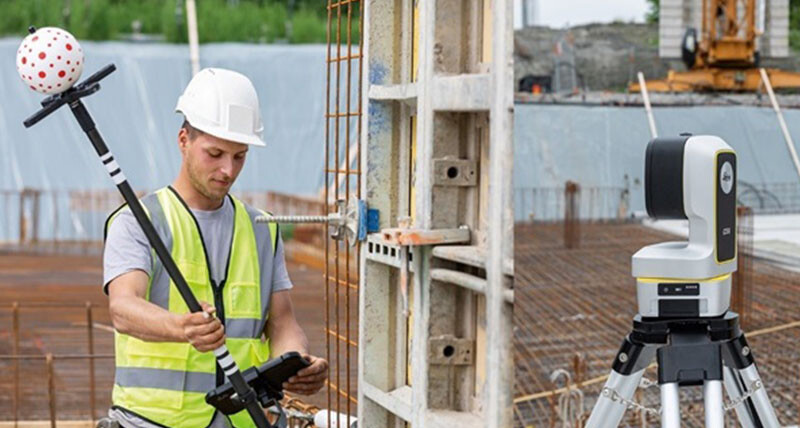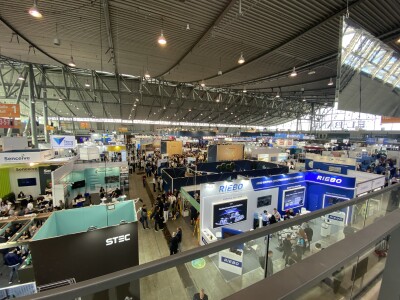Over the last couple of weeks at Geo Week News we have been highlighting some of the conversations we had at Intergeo, the large geospatial event which took place in Stuttgart, Germany last week. One of the big themes over the last few years within the industry, and particularly with its relationship to the AEC sector, is the simplification of tools to embrace wider adoption across industry. Within that theme, Leica Geosystems, part of Hexagon, recently announced their new iCON trades solution. At Intergeo, professionals had their first chance to get some hands-on experience with the new tool.
Geo Week News was among those to take the company up on the opportunity to demo the simplified construction layout tool, and also had the chance to speak with Agata Fischer, Hexagon’s President of Building Field Solutions Divisions, about the tool.
Even just approaching the Hexagon booth at the event, the new solution would immediately catch one’s eye with two separate tools – a pen and a pole – affixed with a hard-to-miss white sphere adorned in red spheres. While the color scheme does match that of Leica, Fischer relays that this is just a happy coincidence. Instead, the red and white proved to be the optimal color scheme to maximize reflection and send the signal to and from the Leica iCON iCS50.
.jpeg.small.400x400.jpg)
This is, in the simplest terms, how the entire solution works, with the robotic layout tool automatically locking in to the vPen and vPole – to which the red and white sphere is attached – allowing for a simplified layout of points and lines while increasing the speed of this workflow. The interface is simple enough for non-trained individuals – including the author – to use, with simple buttons to collect points throughout the process and, for the vPole, a tablet showing what the iCON iCS50 sees.
As Fischer relays to Geo Week News, part of the impetus behind developing this tool was to increase the adoption of technology for field workers, something that Bluebeam CEO Usman Shuja recently highlighted as an issue in construction today. She notes that the adoption of some tools has not been happening as quickly as they’d expect, and that they believe complexity of the technology is part of why.
“The industry has been pushing a lot of BIM-to-field workflows, design-to-field workflows, but we don’t see that adoption is happening as fast as we would like,” Fischer said. “We started digging into it. Why is it so? To some extent, I see that it is about perceived complexity of some of the technologies.”
One of the interesting pieces about the development of this trades solution is how Hexagon leveraged knowledge and technology from the other industries they serve. In addition to their construction division, the company also serves the manufacturing industry, where this kind of laser tracking technology with six degrees of freedom has already been used. They had to make some adjustments to translate the technology to construction, with Fischer specifically making it more “rugged,” given manufacturing’s environments generally being more controlled and sterile.
The construction industry is still struggling to implement these user-friendly tools in the field to the extent many had hoped five years ago, but Hexagon thinks this kind of simplified tool for a specific workflow is the path to getting to that point.






